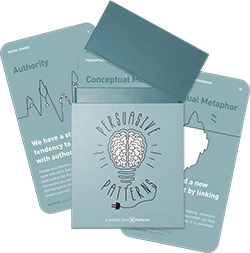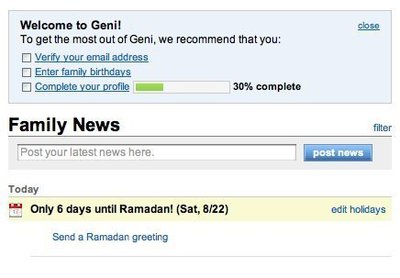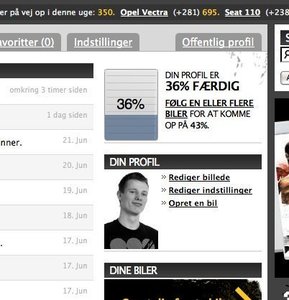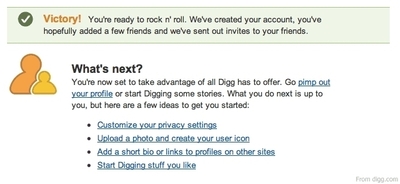Goal-Gradient Effect
Design Pattern
Alternate titles: Completion.
Problem summary
Our motivation increases as we move closer to a goal
Example

▲ The iterations versions of LinkedIn included a completion meter and visualized how close the user was to having a "complete" profile.
Usage
- Use when you want to direct users’ action toward a specific end-goal
- Use when you want to provide users with a tangible end-goal that they can strive toward achieving
- Use when you want to communicate the end of one part of a process and present what’s next
This card is part of the Persuasive Patterns printed card deck
The Persuasive Patterns Card Deck is a collection of 60 design patterns driven by psychology, presented in a manner easily referenced and used as a brainstorming tool.
Get your deck!Solution
Provide a feeling of closure by rewarding users at the completion of a goal
If your application is geared toward a purpose with an end goal, you can use the fact the our Need for closure drive us toward a well defined end-goal.
Optionally, you can divide a larger task into fewer sub-tasks and use the completion of each sub-task to give the user a break and/or communicate what is next.
Set and communicate expectations and progress.
They key is to set expectations and communicate progress in order to utilize the motivational powers of this reward. Expectations can be set and communicated in multiple dimensions:
- In time, how long is the process
- In resources, how much effort is to be put into the process of reaching completion. How many man hours, money, etc. is to be put into reaching the end-goal.
- In quality, what are the requirements of completing sub-tasks or entirely completing a process.
- In progress, how much of the whole process has already been completed. How many resources, how much time, and in what quality can I expect to deliver in order to reach completion?
Making the completion official
If completing the end-goal of the application entitles to bragging rights, provide a way for users to communicate their completion. Common ways to communicate completion are:
- Badges, trophies, and achievements – as when unlocking a Super Swarm Badge on Foursquare or achieving the Booster badge on stackoverflow.com.
- Certification – as when you complete a course and become a certified engineer.
- Diploma – as when you complete an education an reach a degree.
Provide artificial progress
A 10-space coffee card pre-stamped twice will be completed faster than an 8 with no pre-stamps. Providing artificial progress towards a goal will help to ensure users are more likely to complete a task or purchase.
Beware of the post-reward reset effect
Our motivation has a tendency to drop immediately after after a goal has been reached – even when there is a second reward in the horizon. Consider how you can counterbalance this phenomenon.
Divide larger tasks into sub-tasks
…And reward users for completion of each
Rationale
Far-away rewards are much less motivating than near term ones. If you are offering rewards for specific user actions, you will most likely want to reward sooner than later. By increasing the velocity of rewards, you may find that the total reward sum needed will be lower.
Furthermore, the illusion of progress toward a goal induces task and purchase acceleration.
Behaviorist Clark Hull first proposed the goal gradient hypothesis in 1932 – that our tendency to approach a goal increases with proximity to the goal. Its effect has important theoretical and practical implications for behavior in reward programs. Although the hypothesis has been extensively studied on animals, its implications for human behavior and decision making are understudied.
1 Hull, Clark L. (1932), “The Goal-Gradient Hypothesis and Maze
Learning,” Psychological Review, 39 (1), 25–43.
2 Kivetz, R., et. al. (2006). The goal-gradient hypothesis resurrected: Purchase acceleration, illusionary goal progress, and customer retention. Journal of Marketing Research, 43(1), 39–58
3 Goal Gradient Effect at Coglode.com
4 Goal-graident effect at Laws of UX
5 Moving the Finish Line: The Goal Gradient Hypothesis
6 Designing for motivation with the goal-gradient effect by Ian Batterbee
7 Brad A. Myers (1985). The importance of percent-done progress indicators for computer-human interfaces. ACM SIGCHI Bulletin 16(4):11-17
8 Cryder, et. al. (2013). Goal gradient in helping behavior, Journal of Experimental Social Psychology
9 Even The Illusion Of Progress Is Motivating by Susan Weinschenk
10 Goal-Gradient Effect at Learning Loop
More examples of the Goal-Gradient Effect pattern See all 4 example screenshots
User Interface Design Patterns
- Forms
- Explaining the process
- Community driven
- Tabs
- Jumping in hierarchy
- Menus
- Content
- Gestures
- Tables
- Formatting data
- Images
- Search
- Reputation
- Social interactions
- Shopping
- Increasing frequency
- Guidance
- Registration
Persuasive Design Patterns
- Loss Aversion
- Other cognitive biases
- Scarcity
- Gameplay design
- Fundamentals of rewards
- Gameplay rewards





